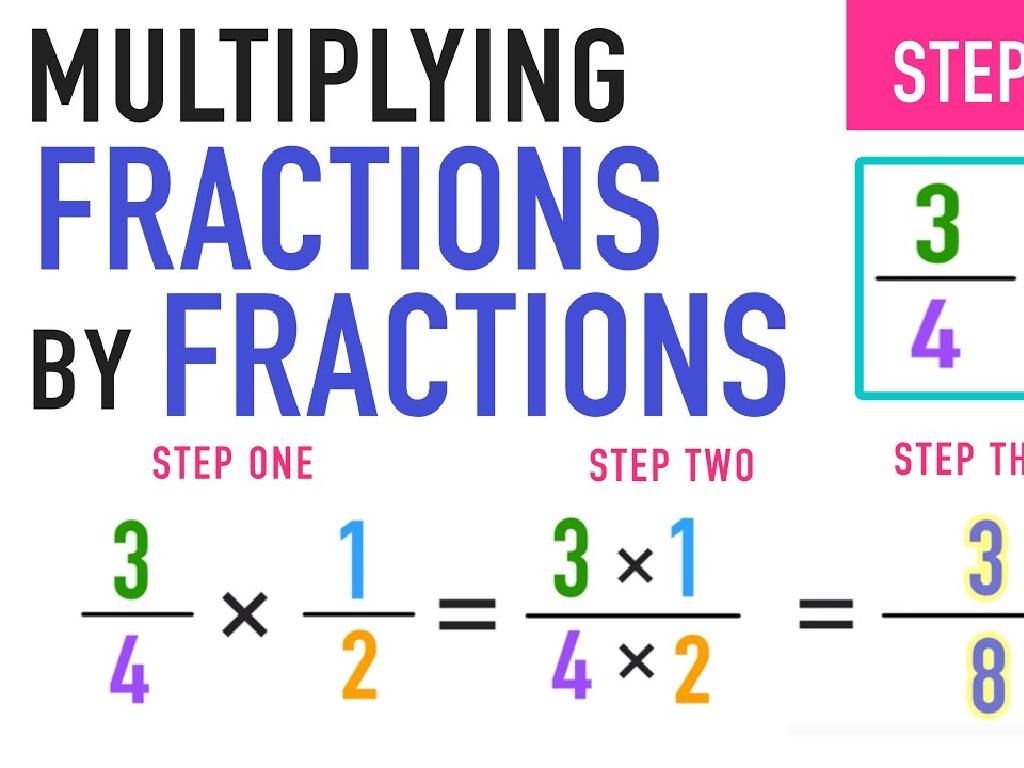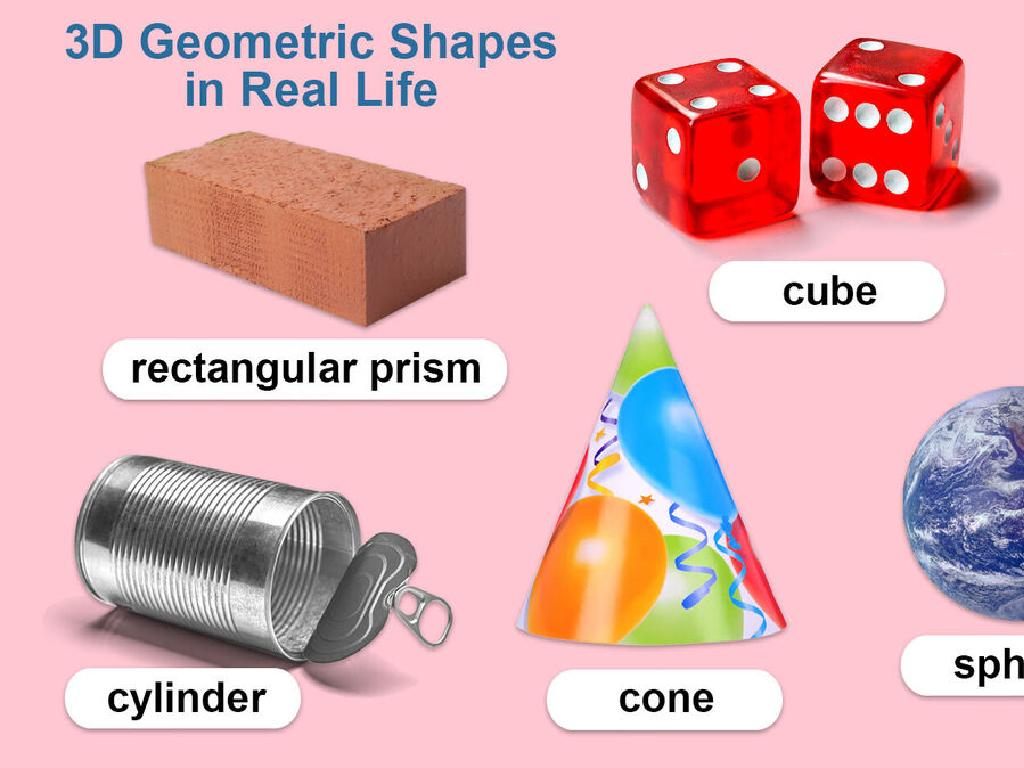Long And Short
Subject: Math
Grade: Kindergarten
Topic: Measurement
Please LOG IN to download the presentation. Access is available to registered users only.
View More Content
Welcome to Measurement: Long and Short
– Greet the day with a smile
– Today’s topic: Long vs. Short
– What things are longer or shorter than you?
– Sizes and measurement basics
– Measurement helps us describe how big or small something is
– Fun with comparing lengths
– We’ll use toys to see which is longer and which is shorter
|
This slide is designed to introduce Kindergarten students to the concept of measurement, focusing on understanding the difference between long and short. Start the class with a warm greeting to set a positive tone. Explain that today’s lesson will help them understand the concept of size, which is a basic part of measurement. Use relatable examples like comparing their own height to objects around them to make the concept of long and short tangible. Incorporate hands-on activities where students can use toys or classroom objects to compare lengths, fostering an interactive and engaging learning environment. Encourage the students to use descriptive words like ‘longer’ and ‘shorter’ as they compare different items.
Understanding Long and Short
– What does ‘long’ mean?
– ‘Long’ means more length, like a jump rope
– What does ‘short’ mean?
– ‘Short’ means less length, like a pencil
– Comparing objects’ length
– Use items to see which is longer or shorter
– Practice with real examples
|
This slide introduces the basic concepts of measurement, specifically focusing on the terms ‘long’ and ‘short.’ Begin by explaining that ‘long’ refers to something that stretches out for a greater distance, and ‘short’ refers to something that does not stretch out as far. Use tangible items that children are familiar with to illustrate these concepts, such as comparing a jump rope (long) to a pencil (short). Encourage the students to participate by picking objects from the classroom to compare their lengths. This interactive approach helps them grasp the concept of measurement in a fun and engaging way. The goal is for students to be able to observe and compare the lengths of different objects and articulate which is longer or shorter.
Let’s Compare: Long and Short
– Guess which object is longer
– Find the shorter object
– Comparing sizes
– We use our eyes to see which is bigger or smaller
– Understanding long and short
– Long means more length, short means less length
|
This slide is designed to introduce Kindergarten students to the concepts of long and short through direct comparison. Start by showing them various pairs of objects and ask them to guess which one is longer and which one is shorter. This visual and interactive approach helps them understand the concept of measurement in a tangible way. Encourage them to use their intuition and observation skills to compare the sizes of objects. Explain that ‘long’ refers to something with greater length, while ‘short’ means it has less length. Use real-life examples that are relevant to their experiences, such as pencils, toys, or even their own heights. This will help solidify their understanding of these foundational measurement concepts.
Exploring Long and Short
– Classroom objects vary in size
– Teacher’s desk is long
– Like a big whale in the ocean!
– Crayons are short
– Like little fish swimming around
– Comparing lengths is fun
– Let’s find more long and short things!
|
This slide introduces the concept of measurement by comparing the lengths of objects found in the classroom. It’s a practical way to help Kindergarten students understand the difference between long and short. Start by showing them the teacher’s desk and explaining that it’s long, then compare it to something short like their crayons. Encourage the children to look around the classroom and identify other long and short items. This activity will help them visually and physically grasp the concept of length. Make the learning process interactive by asking them to compare more items and discuss their observations. This will not only make the lesson engaging but also enhance their descriptive vocabulary.
Exploring Long and Short
– Compare a giraffe’s neck and a snail’s shell
– Giraffe necks are long, snail shells are short
– Your arm versus your foot
– Is your arm longer than your foot?
– Let’s find long and short objects
– We’ll search for items and compare their lengths
– Understanding long and short
|
This slide is designed to introduce Kindergarten students to the concept of measurement, specifically focusing on understanding the difference between long and short objects. Start by showing pictures of a giraffe and a snail to visually demonstrate the contrast in length. Encourage the children to look at their own arms and feet to compare lengths, fostering self-discovery. Organize a classroom activity where students find objects around the room to categorize as long or short, promoting engagement and practical application of the concept. The goal is to help students grasp the idea of length in a fun and interactive way, preparing them for more complex measurement topics in the future.
Class Activity: Long and Short Hunt
– Let’s explore long and short
– Find a long object in the room
– Look for something longer than your arm
– Find a short object in the room
– Look for something shorter than your hand
– Share your objects with the class
|
This activity is designed to help Kindergarten students understand the concept of length by comparing objects. Encourage the children to walk around the classroom and find objects that they can easily identify as long or short. Provide guidance on what can be considered long, such as a broomstick or a ruler, and what can be considered short, like a pencil or a paperclip. Once they have selected their items, each student will have the opportunity to present their findings to the class, fostering public speaking skills and reinforcing their understanding of the measurement concepts of long and short. Prepare to assist students in finding objects and ensure that they are engaged and learning effectively through this interactive activity.
Show and Tell: Long vs. Short
– Share your long and short items
– Explain why one is long and the other short
– Use words like ‘taller’, ‘bigger’, or ‘longer’ for the long item and ‘smaller’, ‘shorter’ for the short item
– Great job on the exploration
– Understanding long and short
– Knowing how to compare helps us in everyday life
|
This slide is for a class activity where students will present the items they found during a scavenger hunt to identify long and short objects. Encourage each student to explain their reasoning for why they chose each item, using comparative language appropriate for their age. Praise their efforts in exploring and understanding the concept of length. As they share, reinforce the vocabulary by repeating and affirming their descriptions. This activity not only helps with their understanding of measurement but also builds their confidence in speaking and explaining their thoughts.
Great Job Learning Long and Short!
– Amazing job learning about length!
– Now describe objects as long or short
– ‘That pencil is longer than the eraser!’
– Give yourselves a big clap!
– Keep practicing at home!
– Try comparing your toys’ lengths!
|
This slide is a conclusion to celebrate the students’ understanding of the concepts of long and short. It’s meant to reinforce their ability to use these descriptors in everyday life and to recognize their hard work. Encourage the children to apply these terms at home by comparing the lengths of different objects. This will help solidify their understanding of measurement and comparison. The round of applause is a positive reinforcement technique to make them feel proud of their learning and to end the lesson on a high note.






